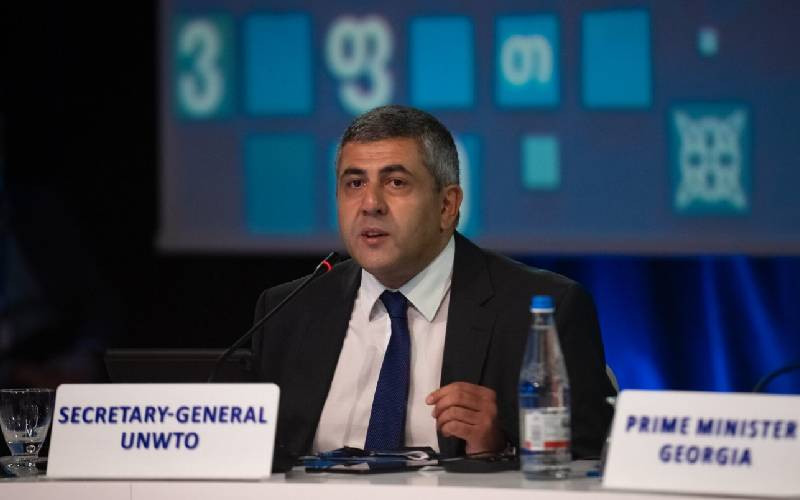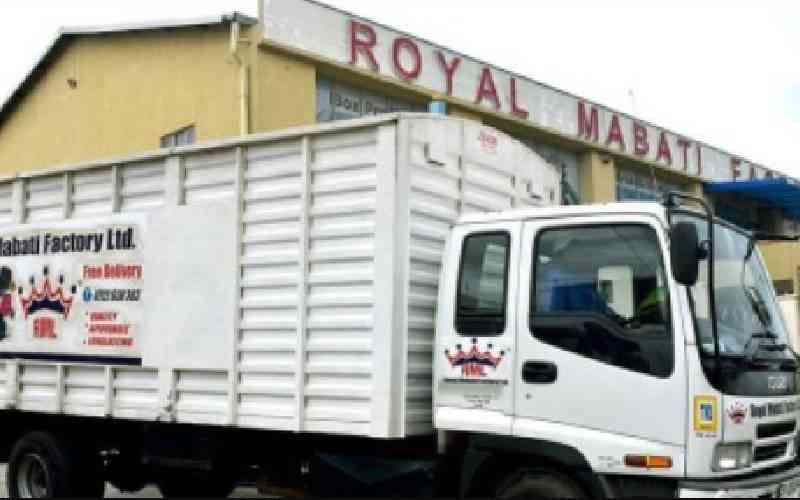By Patrick Beja
It is common for ferries plying the Likoni Channel in Mombasa to stall and drift out of control.
Commuters aboard panic and scream fearing the worst, as they remain stranded at sea.
But the experts who operate them say when the flat board ferries drift and spin, commuters need not panic — the ships are ‘unsinkable’.
Frequently, the ferries break down after engine failure and sometimes drift along the channel, laden with passengers, vehicles, handcarts and bicycles.
And crossing the Likoni or the Mtongwe channels has of late become a breathtaking trip, as hardly a week passes by without a hitch.
impossible to sink
Etched in the minds of the more than 180,000 commuters who use the Likoni ferry daily is what would happen should the ferry stop operating.
But the ferry operators now say the vessels have structures that make them almost impossible to sink even when engines fail or when they are overloaded.
However, that assurance by the Kenya Ferry Services (KFS) management will do little to calm nerves of commuters who have experienced many mishaps at the shark-infested channel.
"They can drift when they stall, but commuters should know ours are among the safest ferries in the world," Mr Janoowala Sajad, the KFS acting managing director says.
Sajad dispelled fears that the ferries could sink like the MV Mtongwe did in 1994, claiming 257 lives. What about the Titanic that ran aground in 1906? It was infamously referred to as being ‘unsinkable’.
More buoyancy
Sajad, who is also the KFS chief engineer, says unlike the ill-fated Mtongwe vessel that was cone-shaped (from top narrowing to the bottom), the current ferries were built with flat rectangular bases to ensure more buoyancy.
He says the flat hull provides sufficient displacement that ensures the ferries float at all times, with or without power.
 |
Commuters emerge from MV Nyayo at the Likoni Channel. Ferry services at the coast are the only link between South Coast and Mombasa Island Photo: Omondi Onyango/Standard |
The expert, who has been at KFS for the last 23 years, says the ferries are fitted with independent ballast tanks underneath, on each of the four corners, that are filled with water, which ensures more stability.
"The 400-tonne tanks are meant to maximise stability and check any possibility of tilting," he says.
MV Nyayo, MV Harambee and MV Kilindini, which were commissioned 20 years ago, have four tanks each for stability.
"These vessels are structurally different from the ill-fated MV Mtongwe which was V-shaped," says Sajad.
African Marine and General Engineering and IHI Marine Engineering built the three vessels in Mombasa and Singapore.
The available space on board for vehicles and passengers, he says, is restricted and cannot allow overloading.
For instance, MV Nyayo was licensed to carry 221.3 tonnes, but the total load of passengers and vehicles it ferries across weighs 192 tonnes.
According to Sajad, this leaves a "safe extra tonnage" of 29 tonnes. MV Nyayo has a capacity to carry 1,200 passengers of average 60kgs each and 60 vehicles of two tonnes each.
extra tonnage
MV Harambee and MV Kilindini have a licensed tonnage of 220.2, (1,440 people and 40 vehicles each). They each carry a total tonnage of 167 and leave an extra load of 53 tonnes.
To control the number of passengers boarding ferries, commuters go through a segregation system manned by guards on the mainland and island sides.
The other ferries, also flat bottomed, are MV Mvita aged 40 (built in 1969) and MV Pwani commissioned in 1975.
KFS officials say the flat hull vessels have twin engines capable of being navigated on one engine should one fails.
If both engines fail, Sajad says, the coxswain can either use services of mechanics on board to rectify the problem or call for tow services from other ferries.
"As a last resort, the coxswain may use the anchor to stop the ferry until help comes. The anchor has never been used to stop a drifting ferry in the history of Likoni ferry services since 1937," he explains.
Ferries undergo weekly routine maintenance that last a day and periodical plan maintenance.
Each vessel has to undergo the docking maintenance after every two and half years.
"This is a major mandatory maintenance where several parts are replaced. It costs between Sh10 million to Sh12 million. Giving a ferry a coat of marine paint costs about Sh3 million," says Sajad.
Additional Sh30 million is paid annually as premiums to underwriters by KFS for its five ferries. Sajad says strict maintenance programme ensures safety, availability and reliability of the vessels.
Old ferries
However, obtaining spare parts for the ferries aged between 20 and 40 is difficult since most manufacturers ceased to manufacture them. KFS has to make specific orders for propellers, engines and winches 13 months in advance, as they are not available.
"When the ferries were delivered, we had an initial agreement to be supplied with spare parts by manufacturers for 10 years. The fleet is old and most of the manufacturers of parts have closed down," Sajad says.
On board, the ferries are fitted with life rafts that can save 10 people each, life rings, life jackets and fire fighting equipment, but commuters complain the gadgets are far from enough. In Europe, ferries can be used for up to 15 years only.
And as KFS struggles to keep the old ferries afloat, hoteliers at the Coast have protested at the delay of tourists at Likoni crossing, which has made south coast an unfavourable tourist destination.
Kenya Association of Hotelkeepers and Caterers Coast executive officer Gladwell Mumia called for immediate intervention.
"Disaster is looming and the people entrusted with the responsibility to ensure safety of Kenyans and development of businesses are either asleep, reckless or just don’t care about the goings-on at this (Likoni) channel," says Mumia.
Alliance Group of Hotels CEO Raymond Matiba has since met KFS officials following frequent delays of tourists to the airport and national parks due to ferry hitches.
But Sajad said KFS was considering introducing a priority lane for tourist buses, which will have to pay 50 per cent more for jumping the queue.
Schoolchildren will benefit from similar arrangement but for free, he says.
"We are in discussion with hoteliers on whether they can pay an extra levy for using a priority lane," Sajad says.
Currently, priority is given to ambulances, fire engines and police responding to emergencies.
Sajad believes delivery of two new ferries from Germany’s Bau shipyard next June will boost ferry services.
He says there was a plan to buy a third ferry worth about Sh500 million in the next financial year.
Glance Box:
KFS offers 24-hour services and provides a link between South Coast and Mombasa.
Ferries carry about 180,000 pedestrians and 3,000 vehicles daily.
The maximum passenger peak hours are 5.30am to 8am and 5pm to 8pm.
Proposed building of a fixed by-pass road at Dongo Kundu is expected to reduce pressure on ferries.
Likoni and Mtongwe crossings (Kilindini Channel) measure about 500m wide each.
KFS offers free services to passengers and is funded by the Government.
Era of modern ferries began in 1937 and Kenya Bus Services Limited, a private firm, owned the ferries.
Kenya Ports Authority owns 20 per cent of KFS and the Government the other 80 per cent.
 The Standard Group Plc is a multi-media organization with investments in media
platforms spanning newspaper print operations, television, radio broadcasting,
digital and online services. The Standard Group is recognized as a leading
multi-media house in Kenya with a key influence in matters of national and
international interest.
The Standard Group Plc is a multi-media organization with investments in media
platforms spanning newspaper print operations, television, radio broadcasting,
digital and online services. The Standard Group is recognized as a leading
multi-media house in Kenya with a key influence in matters of national and
international interest.
 The Standard Group Plc is a multi-media organization with investments in media
platforms spanning newspaper print operations, television, radio broadcasting,
digital and online services. The Standard Group is recognized as a leading
multi-media house in Kenya with a key influence in matters of national and
international interest.
The Standard Group Plc is a multi-media organization with investments in media
platforms spanning newspaper print operations, television, radio broadcasting,
digital and online services. The Standard Group is recognized as a leading
multi-media house in Kenya with a key influence in matters of national and
international interest.










